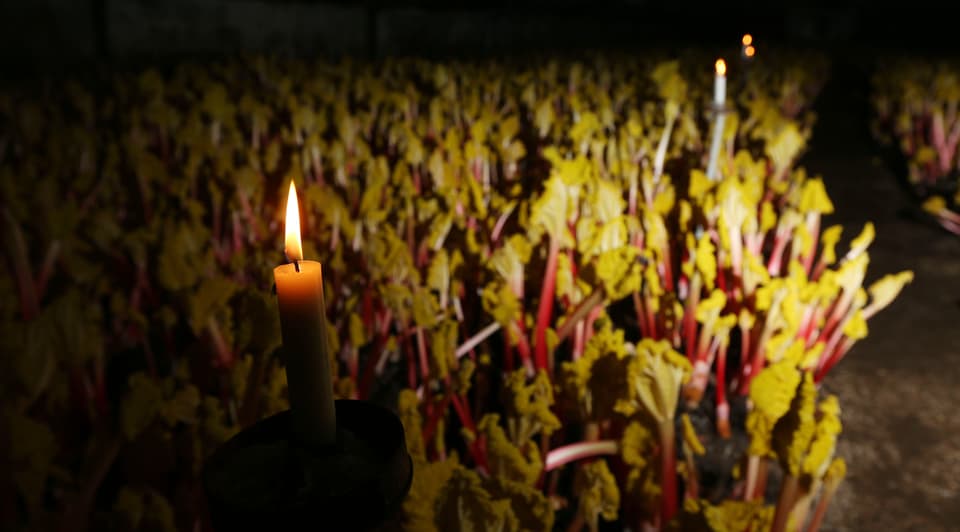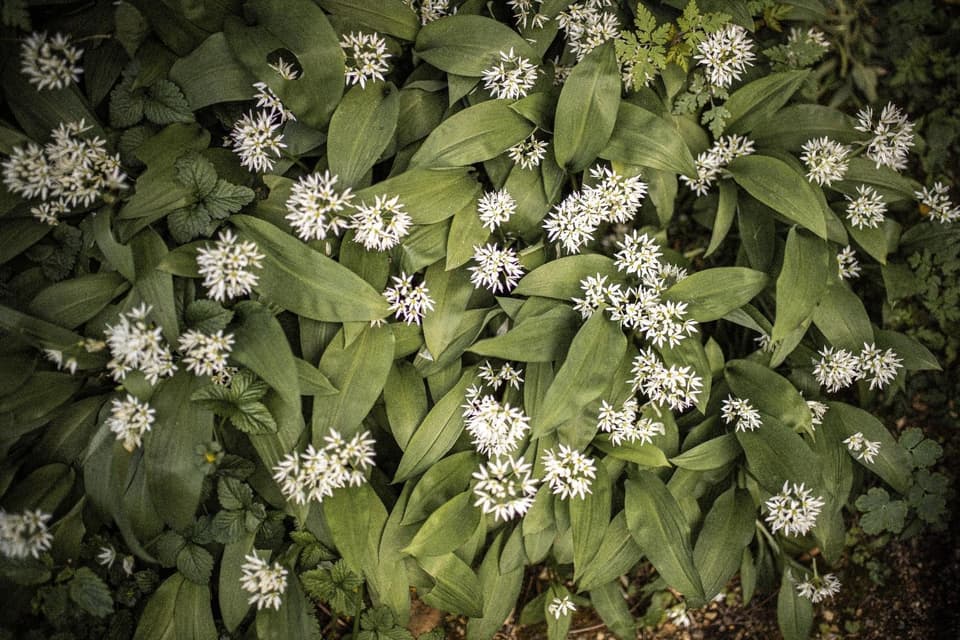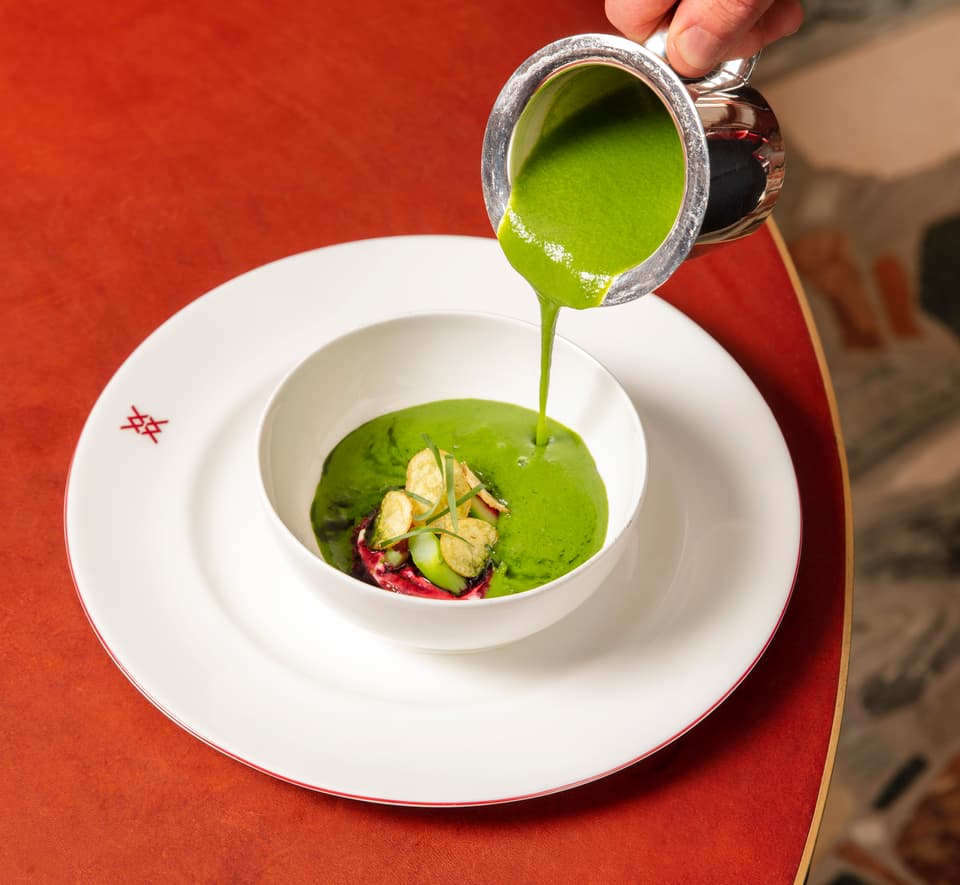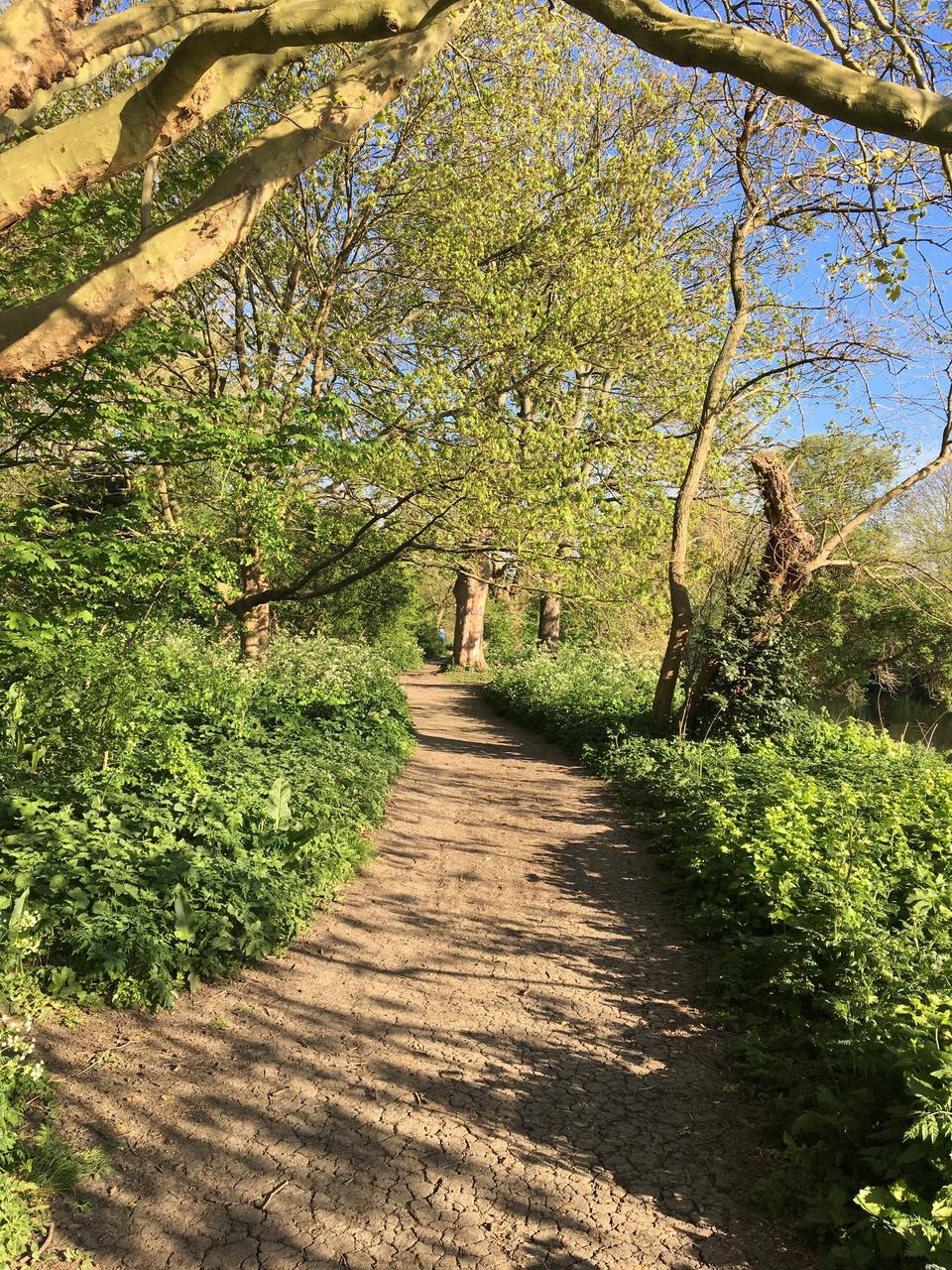
Some people demarcate the seasons by their traditional names. For others, it’s about the flavour of the quarter. Q1 is synonymous with forced rhubarb, while Q2 (sometimes known as “spring”) can only mean one thing: it’s wild garlic season.

Farewell, forced rhubarb season
PA Archive
The pink hued rhubarb polenta cakes on your Instagram feed will be giving way to lurid green pestos and lamb rubbed with a wild garlic marinade. You will want to be involved.
Wild garlic is a forager’s delight; it grows easily and thrives in damp shady woodlands, and there are some spots in London where it can be picked. If you live in the city, here is where you can find it growing.

Unsplash
Wild garlic has long, pointed, lance-shaped leaves. Crush one between your finger and it should give off a strong garlicky smell – the best way to confirm it’s wild garlic. In late spring, it produces star-shaped white flowers in globe-like clusters above the leaves. While foraging, be cautious of lookalikes like lily of the valley, which is toxic and lacks the garlic scent.

Always forage responsibly by picking a few leaves per plant without uprooting the bulbs, and be absolutely certain of your identification before consuming anything.
Using scissors allows you to snip just a few leaves from each plant without damaging the bulb or pulling up the whole plant. This helps ensure the plant can regrow and flower, supporting the local ecosystem.
Only take as much as you need, and do not pick from areas which look overharvested. Only forage garlic from patches that are set back from pathways to avoid bits that might have been trodden on by humans or peed on by dogs.

Wild Garlic & Asparagus Soup at Mount St. Restaurant
Mount St. Restaurant
Make sure you wash your wild garlic thoroughly before cooking with it, and blanche it in boiling water so that it is safe to eat.
Foraging is generally permitted on most non-private land, but you may need permission in certain places. You cannot forage in London’s eight Royal Parks, like Richmond Park and Hyde Park.
Where to find wild garlic in London

Wild garlic can be found in both Highgate Cemetery and Highgate Wood. Heading northeast, find it along the 4 kilometre Parkland Walk, a disused railway line between Finsbury Park and Alexandra Palace. It also grows in Abney Park in Stoke Newington.

Hackney Marshes
Charlotta Billstrom
Wild garlic grows in Tower Hamlets Cemetery Park, but if you would like to forage there, you must apply for permission by emailing The Friends of Tower Hamlets Cemetery Park. (fothcp.org/foraging) They only allow foraging for personal use.
Alternatively, head to Hackney Marshes, or the wooded area of Springfield Park.
For a guaranteed bounteous crop, hop on the central line and head to the final stop, Epping. Carpets of wild garlic grow in Epping Forest, which is also a lovely place for a weekend walk.
Streatham Common
Daniel Lynch
Head to Crystal Palace Park, in the wooded area by Crystal Palace Park Road, or the wooded areas on Streatham Common, Dulwich Park and Wimbledon Common.
West Londoners lament, it’s a bit of a dry patch for wild garlic. There is some which is said to grow in Holland Park, but it is against the park’s byelaws to forage there. You may have to commute.
Alternatively, wild garlic can be bought from places like Ocado, Riverford Organic, and Abel & Cole.













